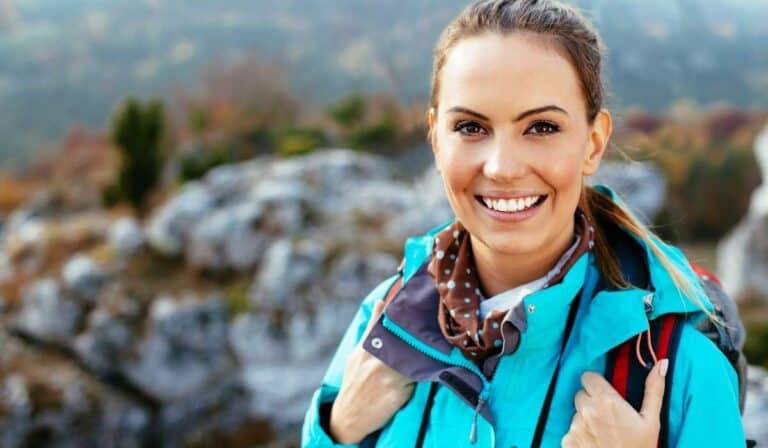Best Hiking Boots for Overpronation
Finding the best hiking boots for overpronation can significantly improve your outdoor adventures. Overpronation, a common foot condition where the foot rolls inward excessively while walking or running, may lead to discomfort and potential injuries during hikes. This guide will provide all the necessary details to help you select the right hiking boots for your needs.
Throughout this article, we will discuss what overpronation is and how it affects your choice of hiking footwear. You’ll learn about the benefits of wearing suitable hiking boots, as well as the different types available in the market. We’ll delve into key features to look for when selecting an ideal pair and present our top 5 recommendations for the best hiking boots for overpronation.
Additionally, we’ll share valuable tips on choosing the right boot based on factors such as fit, comfort level, and terrain type. Finally, proper care and maintenance practices will be discussed so that you can prolong their lifespan and ensure optimal performance throughout your many adventures.
Table of Contents
What is Overpronation and How Does it Affect Your Hiking Boots?

Overpronation occurs when your foot rolls excessively inward while walking or running, causing the arch to flatten. This can lead to discomfort, pain, and potential injuries if not addressed properly. For hikers with overpronation issues, finding the right pair of hiking boots is crucial for a comfortable and enjoyable outdoor experience.
The Impact of Overpronation on Hiking
Hikers with overpronated feet may face several challenges during their adventures:
- Pain in the feet, ankles, knees, hips, or lower back due to improper alignment.
- Increased fatigue as a result of inefficient gait.
- Risk of injury from excessive stress on joints and muscles.
- Faster wear-and-tear on hiking boots due to uneven distribution of weight.
Why Specialized Hiking Boots are Necessary for Overpronators
To counteract these issues and ensure an enjoyable hiking experience for those with flat feet or overpronated strides, specialized footwear is necessary. These types of shoes provide additional support that helps correct foot posture while offering comfort throughout long hikes. The perfect pair will have features such as:
- Arch Support: To prevent your foot from rolling too far inward by providing proper alignment along the entire length of your stride.
- Cushioning: To absorb shock effectively without compromising stability – this ensures reduced strain on joints during extended periods spent outdoors exploring nature’s wonders.
- Heel Counter: A firm, supportive structure that holds the heel in place and prevents excessive movement. This is essential for maintaining stability on uneven terrain and reducing strain on your ankles.
- Secure Fit: Overpronation hiking boots should fit snugly without being too tight or restrictive. A secure fit helps to keep your foot stable within the shoe while allowing for natural movement during hikes.
For enduring sturdiness and protection from the outside environment, it’s essential to select a pair of hiking boots constructed with superior materials like full-grain leather or robust synthetic fabrics. These will ensure longevity and protection against harsh outdoor elements as you venture out into the great outdoors.
Overpronation can cause discomfort and injury when hiking, so it’s important to find the right boot for your feet. Wearing a supportive hiking boot designed specifically for overpronators will provide many benefits that help keep you comfortable and safe on the trails.
The Key Takeaway:
Hikers with overpronation issues need specialized hiking boots that provide arch support, cushioning, a heel counter, and a secure fit to prevent discomfort, fatigue, and injuries. These features help correct foot posture while offering comfort throughout long hikes on uneven terrain. Choosing high-quality materials like full-grain leather or durable synthetic fabrics ensures longevity and protection against harsh outdoor elements.
Click here to read about Best Easy Day Hikes Grand Teton National Park
Benefits of Wearing the Right Hiking Boots for Overpronation
If you’re an avid hiker with overpronation, securing the ideal pair of hiking boots is indispensable for ensuring your feet remain cozy and safeguarded during your excursions. By investing in a high-quality pair of overpronation hiking boots, you’ll experience numerous benefits that will enhance your overall hiking experience.
Improved Comfort and Support
The right hiking boot for overpronators provides ample arch support, preventing excessive foot rolls while walking on uneven terrain. A secure fit ensures that your feet remain stable within the shoe, reducing discomfort caused by friction or pressure points.
Better Stability and Balance
- Heel Counter: A sturdy heel counter helps maintain proper alignment between the foot and ankle, providing better stability when navigating rough trails.
- Full-Grain Leather: Boots made from full-grain leather offer increased durability and support compared to other materials like mesh or synthetic fabrics. This added support can help prevent injuries related to poor balance or instability on challenging hikes.
- Traction: Good traction is crucial for hikers with flat feet as it prevents slipping on wet surfaces or loose gravel. Look for outsoles designed specifically for improved grip on various terrains.
Injury Prevention
Hiking boots designed specifically for those with overpronation can reduce the risk of injury due to improper footwear causing strain on muscles, tendons, ligaments, or joints in both lower extremities (ankles/feet) and upper extremities (knees/hips). A proper fit and adequate support can help minimize the chances of developing painful conditions like plantar fasciitis, shin splints, or knee pain.
Increased Endurance
By investing in a pair of overpronation hiking boots, you can enjoy enhanced comfort and support that will enable you to hike longer distances with reduced fatigue. This means more time spent exploring the great outdoors and creating unforgettable memories.
Incorporating these benefits into your outdoor adventures is as simple as investing in a good pair of overpronation hiking boots. Not only are they comfortable, but they also provide superior support and extra padding to ensure your feet are protected.
Overpronation hiking boots are a great choice for those with flat feet or plantar fasciitis, as they offer extra support where it’s needed most. So, whether you’re a seasoned hiker or just starting out, a good pair of hiking boots for overpronation is a must-have for any outdoor adventure.
Wearing the right hiking boot for overpronation can make a huge difference in your outdoor experience, allowing you to enjoy every step of your journey with greater comfort and stability. Now, let’s examine a few varieties of footwear that can be beneficial for those with overpronation.
The Key Takeaway:
Investing in a high-quality pair of hiking boots designed for overpronation is essential for outdoor enthusiasts with flat feet or plantar fasciitis. These boots provide improved comfort, support, stability, and balance while reducing the risk of injury and increasing endurance during hikes. Look for features like ample arch support, sturdy heel counters, full-grain leather materials, and good traction to ensure your feet are protected on any terrain.
3 Types of Hiking Boots Suitable for Overpronation

For those who experience overpronation or flat feet, it’s essential to locate the ideal type of hiking boots that meet their particular requirements. Hiking boots come in various shapes and sizes, some of which are specifically crafted for those with overpronation or flat feet. In this section, we’ll explore three main types of hiking boots suitable for people with overpronation: motion control, stability, and cushioning models.
Motion Control Hiking Boots
Motion-control hiking boots offer maximum support and stability for individuals with severe overpronation. These shoes typically feature a firm midsole made from high-density foam or other materials that help correct foot rolls while walking on uneven terrain. The ASICS GEL-Venture 7 is an excellent example of a motion-control shoe built to provide ample arch support and prevent excessive inward rolling.
Stability Hiking Boots
Stability hiking boots strike a balance between motion control and cushioning features by providing moderate arch support without compromising comfort levels. These shoes often have a dual-density midsole construction that helps distribute pressure evenly across the footbed while maintaining proper alignment during hikes. One popular option in this category is the Salomon X Ultra 4 GTX®, which offers both stability features along with waterproof protection.
Cushioning Hiking Boots
Cushioning hiking boots are designed to provide maximum comfort and shock absorption for individuals with mild overpronation or flat feet. These shoes typically feature a soft, cushioned midsole that helps reduce the impact of each step while maintaining a secure fit. The Merrell Moab 2 Ventilator Wide Width is an excellent example of a cushioning shoe that offers ample support without sacrificing comfort.
In summary, it’s crucial to understand your specific needs when selecting the right type of hiking boot for overpronation. Whether you require motion control, stability, or cushioning features in your footwear, there’s undoubtedly a perfect pair out there waiting for you. A good pair of hiking boots can make all the difference, especially if you suffer from plantar fasciitis or have flat feet. They’re comfortable, provide superior support, and are a great choice for anyone who loves to explore the great outdoors.
When selecting a hiking boot for overpronation, it is essential to think about the kind of sole and arch support that will best meet your requirements. To ensure you get the best hiking boots for overpronation, consider features such as sole type and arch support.
The Key Takeaway:
To determine the most appropriate boots for overpronation, one must first recognize their individual requirements. There are three main types of hiking boots suitable for people with overpronation: motion control, stability, and cushioning models. Motion control offers maximum support and stability while cushioning provides comfort and shock absorption.
Click here to read about Best Ankle Braces for Hiking: Ultimate Guide & Top Picks
Features to Look For in a Hiking Boot for Overpronation
Finding the perfect hiking boot for overpronation can be challenging, but it’s essential to ensure your comfort and safety on the trail. To help you make an informed decision, here are some key features to look for when selecting a hiking boot specifically designed for those with overpronation:
Arch Support
A crucial feature of any good overpronation hiking boots is proper arch support. This helps distribute pressure evenly across your foot and prevents excessive rolling inward during each step. Look for boots that offer ample arch support or consider adding aftermarket insoles if needed.
Cushioning & Shock Absorption
Hikers with flat feet often require additional cushioning and shock absorption in their footwear. Make sure the hiking boots you choose have adequate padding around the heel counter and midsole area, which will provide extra protection against impact while walking on uneven terrain.
Stability & Motion Control
The best overpronation hiking boots should offer excellent stability and motion control features that prevent excessive foot rolls during hikes. These may include reinforced shanks or rigid materials like full-grain leather used throughout the construction of the boot.
Durable Materials & Construction Quality
- Full-grain leather: Opting for a high-quality material such as full-grain leather ensures durability, water resistance, and excellent support for your feet.
- Heel counter: A sturdy heel counter provides additional stability, helping to keep your foot in place and prevent excessive rolling inward.
- Secure fit: Look for hiking boots that offer a secure fit with adjustable lacing systems or straps. This will help keep your foot stable within the boot during hikes.
Breathability & Moisture Management
To avoid discomfort caused by sweaty feet, choose hiking boots made from breathable materials that allow moisture to escape while keeping water out. Many modern designs incorporate mesh panels or waterproof membranes like Gore-Tex® for optimal breathability and moisture management on the trail.
Incorporating these features into your search criteria when shopping for overpronation hiking boots will ensure you find a pair that offers maximum comfort, support, and durability during all of your outdoor adventures.
Having the right hiking boots for overpronation can make a huge difference in your outdoor experience. Hence, when opting for a boot, it is essential to ponder the characteristics that best suit your foot type. Next, we’ll explore some of the current top-tier hiking boots available.
The Key Takeaway:
When looking for hiking boots suitable for overpronation, it is essential to consider features such as arch support, cushioning and shock absorption, stability, and motion control. Additionally, durable materials like full-grain leather should be considered alongside breathability and moisture management. Incorporating these features into your search criteria will ensure you find a pair of hiking boots that offer maximum comfort, support, and durability during all outdoor adventures.
Top 5 Best Hiking Boots For Overpronation

For those with overpronation, we’ve identified the five best hiking boots to provide superior support and comfort – let’s take a look. We’ve compiled a list of the top five best hiking boots that offer excellent support and comfort for those with flat feet or who experience their foot rolling inwards while walking. Let’s dive into these fantastic options:
- Salomon Quest 4D 3 GTX: These full-grain leather hiking boots are designed specifically for stability and support, making them an ideal choice for those with overpronation. The high-cut design provides extra ankle support, while the heel counter ensures a secure fit.
- Asolo Fugitive GTX: Made from water-resistant suede and Cordura nylon, these lightweight yet durable hiking boots feature a supportive midsole that helps control pronation. The GORE-TEX lining keeps your feet dry in wet conditions.
- KEEN Targhee II Mid WP: With KEEN.DRY waterproof technology and arch support specifically designed to address overpronation issues, this boot is both comfortable and functional. The rubber outsole offers excellent traction on various terrains.
- Merrell Moab 2 Mid GTX: This popular hiking boot features a Vibram TC5+ outsole for great traction and stability, as well as an air cushion in the heel to absorb shock. The M Select FIT.ECO+ blended EVA contoured footbed provides excellent arch support for those with overpronation.
- Lowa Renegade GTX Mid: These boots are made from nubuck leather and feature a GORE-TEX lining for waterproof protection. The PU Monowrap Frame midsole offers superb support and stability, making them perfect for hikers with flat feet or overpronation issues.
These boots have been meticulously chosen to offer comfort, support, and resilience particularly suited for those who suffer from overpronation. With any of these options, you’ll be able to confidently hit the trails knowing your feet are well-supported.
Choosing the right hiking boot for overpronation can be a daunting task, but with these top 5 best boots you will have the support and comfort to enjoy your outdoor adventure. Having discussed the essentials of selecting an appropriate boot, let’s now consider some tips to ensure you make the right choice.
The Key Takeaway:
Looking for the best hiking boots for overpronation? Look no further. We’ve compiled a list of the top five options that offer excellent support and comfort, including Salomon Quest 4D 3 GTX, Asolo Fugitive GTX, KEEN Targhee II Mid WP, Merrell Moab 2 Mid GTX, and Lowa Renegade GTX Mid. Each boot has been carefully selected based on its ability to provide stability and durability specifically tailored toward individuals who experience overpronation.
Click here to read about Best Knee Sleeve for Hiking: Comprehensive Guide & Reviews
6 Tips For Choosing The Right Hiking Boot For Overpronation
Finding the perfect hiking boots for overpronation can be a challenging task, but with the right guidance and knowledge, you’ll be well on your way to conquering trails comfortably and confidently. Here are some tips to help you choose the best pair of hiking boots that cater specifically to your overpronated feet:
A. Consider Your Foot Shape and Size
It’s essential to know your foot shape and size before purchasing any footwear, especially when dealing with overpronation issues. Measure both feet as they may differ in size slightly, and use these measurements while shopping for overpronation hiking boots. Additionally, take note of whether you have flat or high arches as this will affect which type of support is most suitable.
B. Look for Arch Support Features
Good arch support is crucial in preventing excessive foot rolls during hikes; therefore, ensure that the hiking boots you select offer adequate arch support tailored specifically for those who experience overpronation.
C. Prioritize Stability & Motion Control Features
- Motion control: Opting for motion control shoes helps limit excessive pronation by providing extra stability through features like rigid heel counters or dual-density midsoles.
- Stability: Stability-focused shoes provide additional cushioning around the ankle area while maintaining a secure fit throughout wear – a great choice if comfort is a top priority.
D. Examine Material Quality & Durability
The material used in your hiking boots plays a significant role in their overall durability and performance. Look for full-grain leather or other high-quality materials that can withstand the wear and tear of outdoor adventures while providing ample support.
E. Test Out The Fit & Comfort
Trying on different pairs of hiking boots is essential to ensure they provide a secure fit, adequate arch support, and comfort throughout your hikes. Walk around in them at home before hitting the trails to get an accurate feel for how well they cater to your overpronation needs.
F. Read Reviews & Seek Recommendations
Reading reviews from fellow hikers with overpronation issues will give you valuable insights into which hiking boots have worked best for others facing similar challenges. Additionally, seeking recommendations from friends or experts within the field can further guide you toward finding the perfect pair tailored specifically to your needs.
By following these tips and considering factors such as foot shape, size, arch support features, stability elements, material quality, fit, and comfort levels – you’ll be well-equipped to choose the ideal hiking boots designed specifically for those experiencing overpronation.
When selecting a hiking boot, take into consideration the landscape and your pronation requirements for optimal comfort and support. Moving on to Care & Maintenance Tips For Your Hiking Boots, it is important to remember that proper care for your boots not only increases their longevity but also keeps them in good condition so they continue providing the best performance possible.
The Key Takeaway:
When choosing hiking boots for overpronation, it’s important to consider foot shape and size, arch support features, stability and motion control elements, material quality, and durability. Testing the fit and comfort of different pairs before hitting the trails is also crucial. Reading reviews from fellow hikers with similar issues can provide valuable insights when making a decision.
Care & Maintenance Tips For Your Hiking Boots

Proper care and maintenance of your hiking boots can significantly extend their lifespan, ensuring that they continue to provide the support and comfort you need on the trail. In this section, we’ll discuss some essential tips for taking care of your overpronation hiking boots.
A. Cleaning Your Hiking Boots
- Remove dirt and debris: After each hike, use a soft brush or cloth to remove any dirt or mud from your boots. This will prevent buildup that could damage the materials over time.
- Clean with mild soap: If needed, mix a small amount of mild soap with water to create a gentle cleaning solution. Use a sponge or cloth to gently clean the surface of your full-grain leather hiking boots without soaking them through.
- Rinse thoroughly: Wipe off any remaining soap residue using a damp cloth before allowing your boots to air dry away from direct sunlight or heat sources.
B. Conditioning & Waterproofing
To maintain the performance and longevity of your hiking boots’ leather material, it’s crucial to condition and waterproof them regularly.
- Conditioning products, such as mink oil or beeswax-based creams, help keep full-grain leather supple while preventing cracks caused by drying out.
- If you have waterproof hiking boots designed for overpronation support, make sure you apply an appropriate waterproofing treatment to maintain their water resistance.
C. Drying & Storage
Proper drying and storage are essential for preserving the integrity of your hiking boots’ materials, ensuring a secure fit and optimal arch support over time.
- Avoid direct heat: Never place your wet boots near heaters or other direct heat sources, as this can cause the leather to shrink or warp. Instead, let them air dry in a well-ventilated area away from sunlight.
- Maintain shape: Stuff your boots with newspaper or use boot trees to help maintain their shape while they dry. This will prevent creases that could affect the heel counter’s stability and overall support for flat feet prone to overpronation.
- Store properly: When not in use, store your hiking boots in a cool, dry place away from direct sunlight or extreme temperatures. This will help preserve the materials and ensure they’re ready for your next adventure.
Taking care of your overpronation hiking boots doesn’t have to be complicated – by following these simple tips, you’ll keep them looking great and providing excellent foot support on all of your outdoor adventures.
The Key Takeaway:
Post-hike, a soft brush or cloth and mild soap should be used to clean boots in order to prolong their life. Conditioning and waterproofing are also crucial for maintaining the performance and longevity of full-grain leather material. Finally, proper drying, shaping, and storage will preserve materials while ensuring optimal arch support over time.
Click here to read about Best Snake Gaiters for Hiking
FAQs about Best Hiking Boots for Overpronation
Are Boots Good for Overpronation?
Yes, certain hiking boots are specifically designed to provide support and stability for individuals with overpronation. These boots typically feature a strong arch support, firm midsole, and a stable heel counter to help correct the foot’s natural rolling motion and prevent injuries while hiking.
Are Merrell Moab Good for Flat Feet?
The Merrell Moab series offers some models with adequate arch support suitable for people with flat feet. However, it is essential to try on different models and consult an expert or podiatrist before making your final decision based on individual comfort levels and specific needs.
Are Hiking Boots Supposed to Have Arch Support?
Hiking boots should ideally offer proper arch support as it helps distribute weight evenly across the foot during long hikes. Adequate arch support in hiking footwear prevents discomfort, fatigue, and potential injuries by maintaining optimal alignment of the foot while walking on uneven terrain.
Do Columbia Boots Have Good Arch Support?
Columbia offers various boot models that provide decent arch support depending on individual preferences. It is crucial to choose a model that best suits your specific requirements after trying them out personally or consulting an expert opinion regarding their suitability for your unique needs.
Conclusion
Understanding what overpronation is and how it affects your feet is crucial to finding a comfortable and supportive pair of hiking boots. Look for features such as arch support, extra padding, and a secure fit to ensure that your foot rolls inward properly while on the trail.
We’ve outlined some of the top hiking boots for overpronation, but it’s important to remember that everyone’s feet are different. Think about elements such as landscape, weather, and individual inclinations when selecting a pair of hiking boots.
If you’re looking for high-quality hiking gear, including shoes designed specifically for those with flat feet or overpronation issues, check out Sunwater Dirt & Mud. Their selection of outdoor gear will help you get ready for any adventure!







